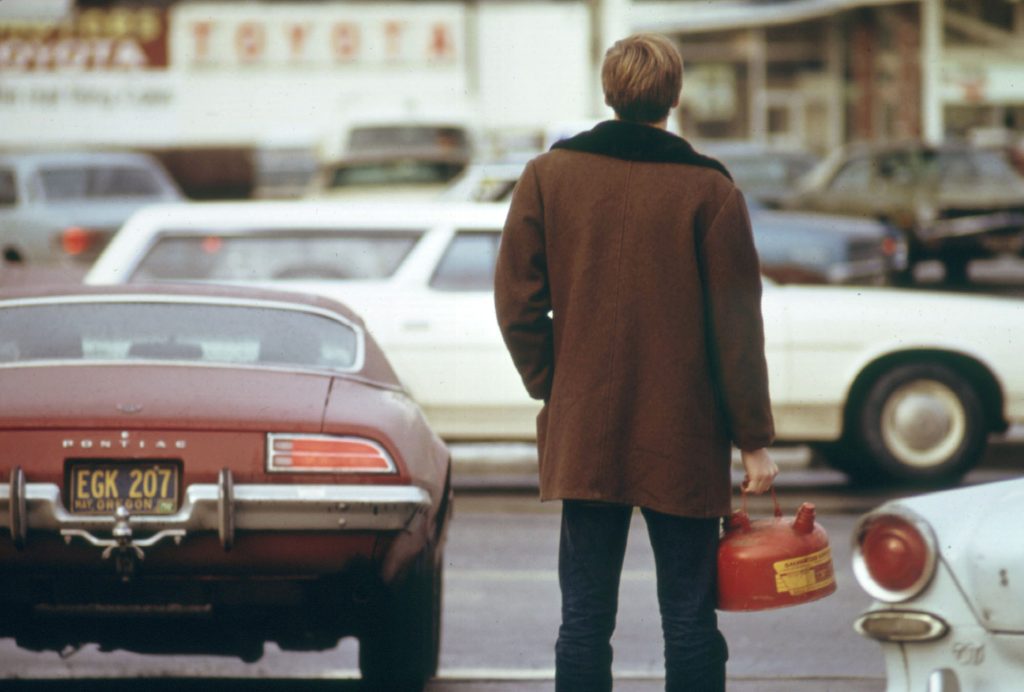With the exceptional rise in gasoline prices resulting from Russia’s invasion of Ukraine, all eyes are on refiners. Why is it so high, and when will it drop? We can answer some of the first question, but not all of it. That’s because, in states like California, there is a portion of the gas tax nobody calls a tax. Really, it’s a secret gas tax.
They’re a gas tax, though not defined as a gas tax
High gas prices are everywhere | Getty
While you would expect Cali to be the state with the highest gas price, it is actually Pennsylvania. But Cali comes in number two. And breaking down all of the bits that make up the tax, two fees are not related to driving, infrastructure, or refining. They are not a gas tax as defined by the U.S. Department of Energy.
Does your state have secret taxes assessed on gas consumption? We’re crunching the numbers now. But here is California’s story, and it is not good.
The average tax on just the gas itself is 29.15 cents a gallon. But some states are much lower, and some much higher. Alaska’s gas tax is about nine cents. Hawaii and Virginia have a 16 cent tax. Conversely, Pennsylvania’s is 57 cents a gallon, Cali’s is 51 cents, and the state of Washington’s is 52 cents.
Rising gas taxes began in the 1970s

Non-refining assessments make up part of the tax. But the gas portion is primarily from refining issues. In the 1970s, the state began restricting certain chemicals and processes for refining. Thus began the higher tax on gas.
In 1994, it mandated the California Reformulated Gasoline specifications. This eliminated MTBE and reduced acceptable sulfur levels. By 2010, an additional tax helped cover the California Climate Change programs. Then the federal excise tax increased in 2017 to 18.4 cents. All states pay this amount except Cali, which pays 81.5 cents a gallon.
The Cali gas tax is 20 cents more than the U.S. average

California’s overall tax on gasoline is around $1.18, which is about 20 cents more than the country’s average. Besides the federal excise tax, it pays 50 cents into a state excise tax, which varies with inflation. There is also a sales tax that is different for every county, and a one-cent tax to clean up service station underground storage tank leakages.
But there are two other fees added to the gas tax. They aren’t related to roads and infrastructure, refining, or other costs associated with automobile use. These are the “Fuels Under the Cap,” (FUC) and “Low Carbon Fuel Standards,” LCFS. These fees don’t fall into the tax category. But every gallon of gas sold in California has them.
The FUC is a Cap and Trade tax that requires fuel manufacturers to buy what is essentially a license to emit greenhouse gasses. It varies, but averages around 14 cents a gallon. The LCFS mandates gas manufacturers making high carbon fuels buy credits from low carbon emitters. Ethanol, biodiesel, electricity, etc, are considered low-carbon fuels.
Here are the reasons why a tax isn’t labeled a tax

The reason they are not considered a gas tax, though they are paid as part of it, is because they don’t have a set price. And they aren’t collected by the state nor factored by a percentage of the price. But they pass through to consumers by the gas tax.
What do these secret fees take in? According to Stillwater Associates, a tech development firm, they added up to almost $600 million combined in 2019. The FUC brings in about $220 million, and the LCFS around $350 million.